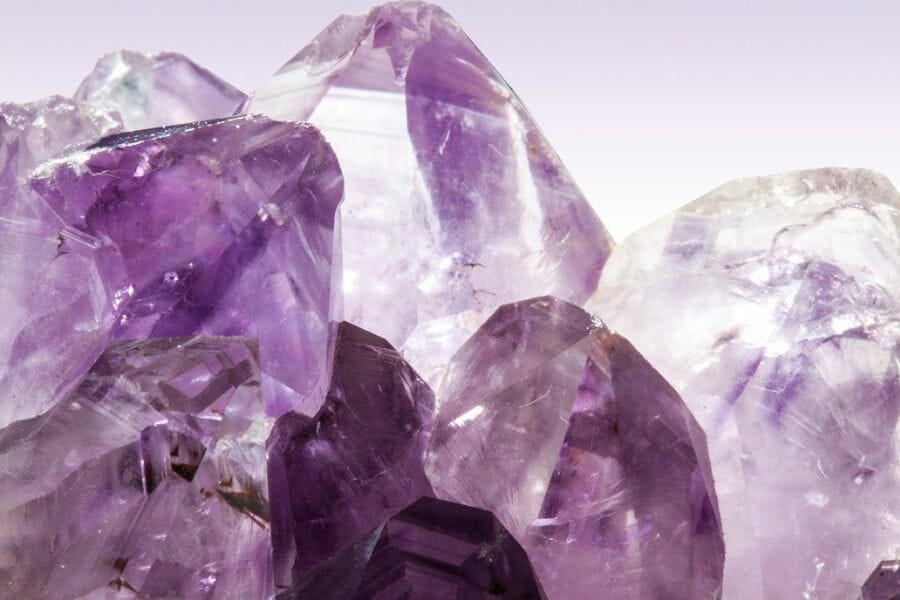If you want to find amethysts or amethysts mines, you’ve come to the right place. If you desire this purple quartz because of its symbol of royalty, legendary mystical powers of healing or protection, or even to look adorable, we can help. While they aren’t always easy to find, these natural gemstones abound all over the world.
Rather than embarking on a wild-goose chase, looking for amethyst where there is none, our experienced insider guides can help you locate this highly sought-after quartz.
This beautiful crystal, ranging in color from pale lilac to deep violet, can be found on the inner surface of an amethyst geode. This gemstone is widely distributed, drawing from gems found in the South American Upper Cretaceous basalts to North America’s Thunder Bay and the amethyst mines scattered around America.
If you adore these purple gemstones and have always wanted to know more about them, now’s your chance. Whether you are a new rockhound or a pro, we have plenty of options for you to explore for a successful amethyst hunt. Hold tight, grab your hammer, and let’s go amethyst hunting!
What Is Amethyst?
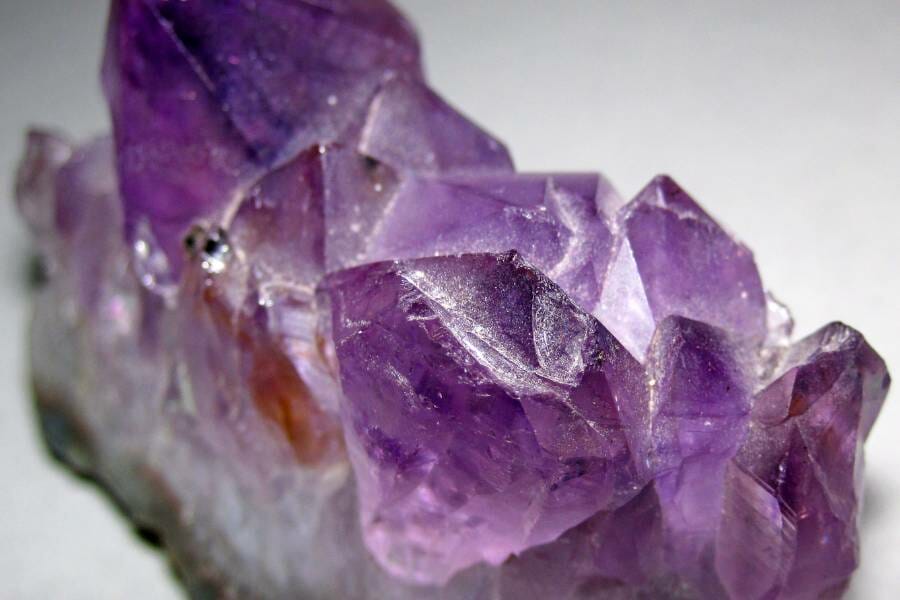
Amethyst is a popular purple gemstone formed in prismatic crystals in amethyst geodes. This durable gemstone has a Mohs hardness of seven and is a product of solidified hydrothermal fluids that moved away from the magma along fissures and fractures.
This mineral-saturated hydrothermal fluid crystallizes and hardens as the rock cools down, forming amethyst. This macrocrystalline quartz has iron inclusions and is cooled below 420°C (788°F).
The color can be pale lilac, reddish-purple, or deep violet, and the coloration results from natural radiation and minute amounts of ferric iron (Fe3+). It can occur as geodes and crystal points. If you want to explore these lovelies, grab your hammer and go mine for amethyst.
Where Amethyst Is Formed
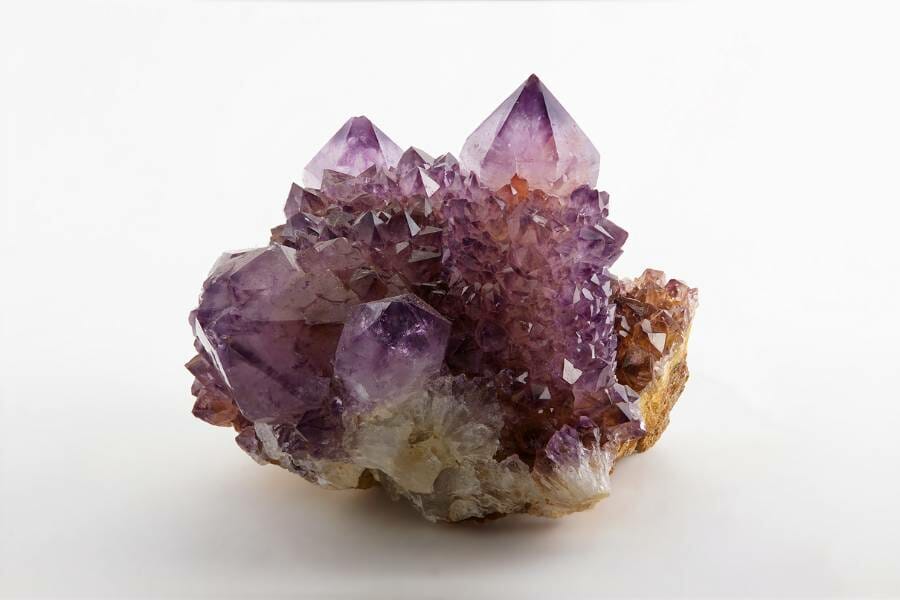
Amethyst is largely found in volcanic rocks. It can also be found in metamorphic rocks, but rarely in sedimentary rocks. This is because the necessary conditions required for the formation of this gemstone are not usually present in sedimentary rocks.
Also, amethyst is found within stones of the quartz family, especially in geodes. Volcanic rock cavities provide a good environment and conditions for the geodes to be formed.
Types Of Amethyst
Amethyst comes in various forms, these include:
- Ametrine amethyst – When amethyst quartz cools above 420°C or when heated, it changes to Citrine quartz, which can produce a bi-color effect of yellow and purple. The combination of amethyst and citrine is known as ametrine.
- Purple amethyst is high-grade amethyst; the purple coloration results from traces of iron and manganese. It is used in fine jewelry.
- Pink amethyst – The pink coloration results from the hematite mineral, which produces red streaks in stones. It has soft lilac to pink and peach coloration.
- Mossy amethyst – These amethyst crystals have thin structures that are red, with black tourmaline inclusions.
- Parasiolite amethyst – This is a pale green variety of quartz that naturally occurs close to deposits of purple amethyst. The green coloration is due to extremely high-temperature lava intrusions that caused the chemical reactions that changed the purple quartz to green quartz.
- Cape amethyst – This is a mixture of amethyst and milky quartz.
Where Amethysts Can Be Found And Mined
This gemstone is found on all continents, but the largest deposits are in South America, Africa, and North America. Major amethyst deposits worldwide are found in cavities and fractures of igneous rocks.
According to the United States Geological Survey, Brazil, Bolivia, Uruguay, and Zambia produced the highest commercial amethyst production between 2006 and 2016. High-quality and naturally formed amethyst are found in Namibia, Siberia, Sri Lanka, and the Far East.
Also, large deposits of amethyst are found in Brazil, Uruguay, Australia, Namibia, and America. Some of the locations where amethyst is found include:
Amethyst Mining Spots In The USA
*Click On The State Above To Read The Full Guide*
We have put together comprehensive guides to finding amethysts in many of the states of the US and will continue to add to them over time. To find more specific hunting locations in each state you can click on the map above or use the alphabetized list below:
The Rest of North North America
In North America, rockhounds are always looking for where they can find amethyst. Amethyst can be found in the middle Cenozoic volcanic rocks, and the Cretaceous to Miocene intrusive rocks spread around this continent.
Amethyst geodes can be found on the major volcanic fields on these host rocks. Mexico is home to the Veracruz amethyst, which has a colorful formation.
The largest mine in North America is Thunder Bay in Ontario.
Amethyst Mining Spots In South America
As a rockhound, ever wonder where amethysts are found on this great continent? The largest concentration of amethyst is in South America. The upper cretaceous basalts of the Alto Uruguai belt shelter the amethyst deposits and the hydrothermal fluids containing mineral water.
In Uruguay and Brazil, large deposits of amethyst are found in the basalt flow cavities, which can contain tons of amethyst crystals. Uruguay produces fine amethyst, which is dark in color and with a distinct clarity; this differentiates it from Brazilian amethyst.
Amethyst Mining Spots In Africa
The African amethyst varieties are richer in color and have smaller crystals. From the Magaliesberg Mountains near Pretoria in South Africa, which house the rare Cactus amethysts, to the Livingstone district of Zambia north of Victoria falls, this continent is home to amazing amethyst.
The Cactus quartz is native to Boekenhoutshoek in the Mpumalanga Province, where Precambrian granite over 2 billion years old is filled with silica-rich hydrothermal fluids. In Zambia, the high-quality amethyst is hosted by the granitic gneisses and marble fracture fillings in the Kariba area.
Zambia is the largest producer of this gemstone on the continent. The Cactus Quartz is found only in South Africa and has its main crystals covered by smaller spiky crystals.
How To Find Amethyst
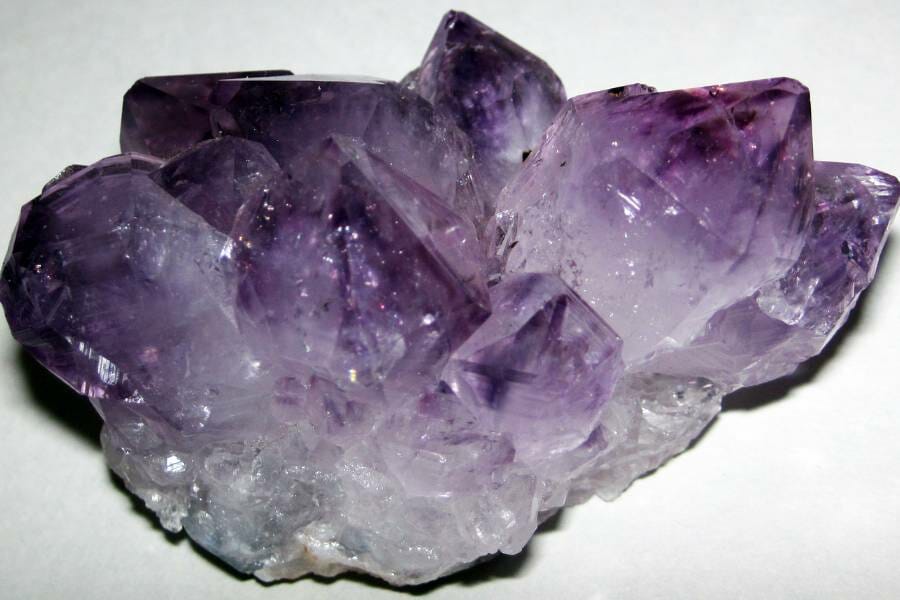
Amethyst doesn’t form randomly. Knowing where amethyst is found, and that it’s often near quartz, will help you in your search. Look for intrusive and extrusive igneous rocks, alpine-type fissures, metamorphic rocks, and hydrothermal veins. It can also be found in some sedimentary rocks and metasomatic rocks deposited by hot springs.
Some basic requirements for amethyst to form include silica-enriched fluid between 50-250°C, cavities for deposition, gamma radiation, and ferric iron. Natural radiation is particularly needed for amethyst to display its amethystine potential. This natural radiation creates dazzling purple coloration, causing the Fe3+ atoms to lose an electron during the process.
Basalt is an example of an igneous rock with trace amounts of radioactive minerals like uranium 238, thorium 232, radium 226, and potassium 40.
The Best Amethyst Mines Near You
Amethyst is found all over the globe, with Brazil having the largest deposit. However, you cannot access commercial mining operations every country. Still looking for amethyst crystal mines near you? You may want to go through our top picks in the USA for an adventurous hunt.
Four Peaks Arizona Amethyst Mine
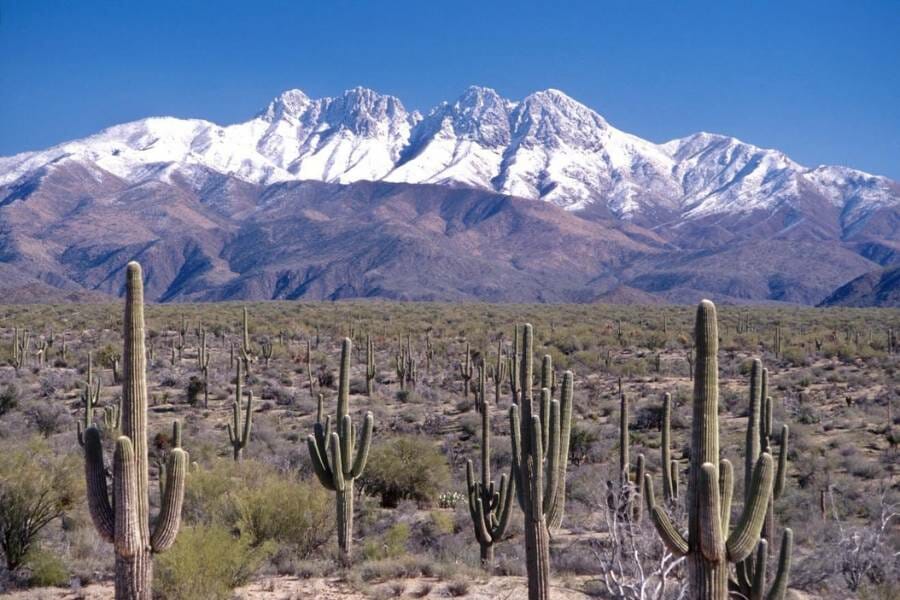
The Four Peaks Mine is synonymous with amethyst in this Grand Canyon state. This amethyst mine is home to the unique and dark-colored Siberian Red Amethyst with a red flash when viewed under natural light. This type of amethyst is found only in this mine and the Ural Mountains in Siberia. Rockhounds and supplies can only assess this mine by helicopter and remain there for 1-2 weeks.
It is located in the Mazatzal Mountains, about 45 miles from Phoenix. Mining activities have been taking place in this mine for the past century. The rugged terrain of this mine and the unique color and features make Four Peaks Amethyst a rare gemstone coveted by rockhounds.
Only hand tools are permitted for a rather slow and tedious extraction of the amethyst. Rockhounds’ only luxury in the mine is a shed and a generator at night, with no running water or electricity. The rough-mined amethyst is only transported to Scottsdale twice a year, where it will be cleaned and sorted before sending it to China. It will be processed and returned as carats of cut gemstones.
Diamond Hill Mine
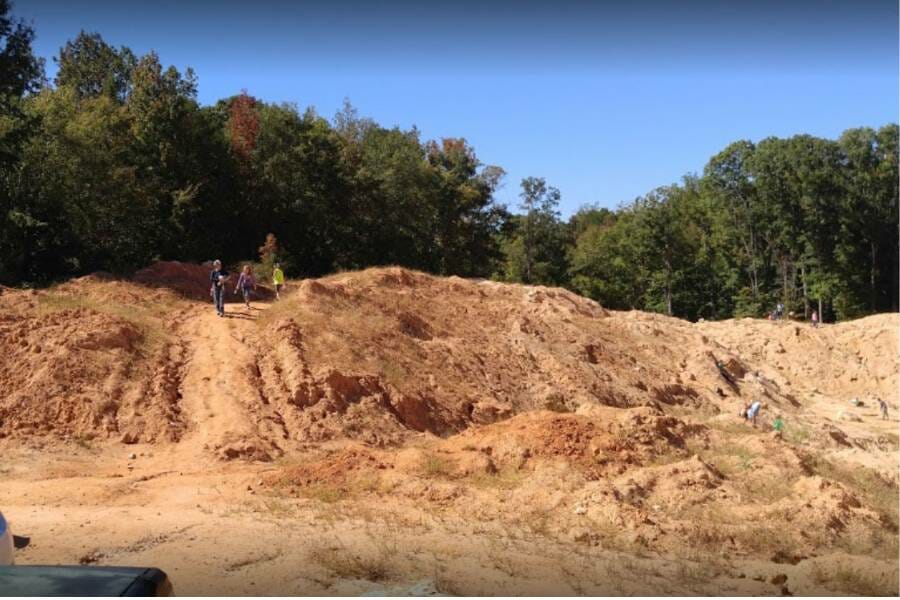
The Diamond Hill Mine in Antreville, Abbeville County, is home to high-quality amethyst, which is also the official state gemstone of South Carolina. The mine is in the northwestern part of South Carolina, near Antreville. Diamond Hill’s quartz deposits result from erosion millions of years ago to the southern part of the Appalachian Mountains, producing some of the best amethyst in the country.
The host rock is a granitoid gneiss derived from the metamorphism of the Antreville Pluton, which was later fractured by tectonic fault movement along the sheer zone of Lowndesville. This allowed hydrothermal fluid access through the fractures to deposit silica.
Rockhounds can explore the thrill of hunting their dazzling crystals as an excavator digs twice a year to unearth new crystals in the mine. The mine allows rockhounds to use hand tools for their amethyst hunting, but they must be aware of public digging areas.
Jackson Crossroads Amethyst Mine
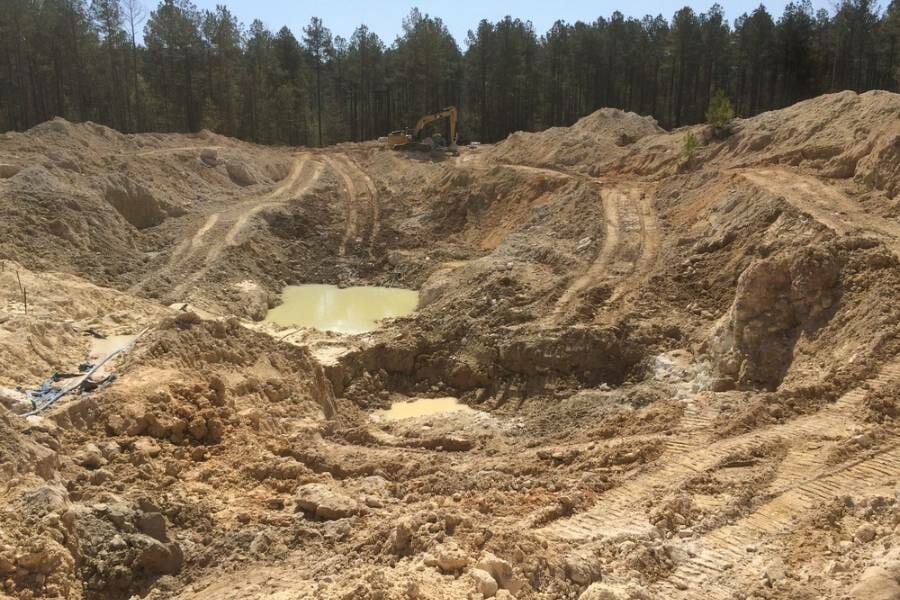
The Jackson’s Crossroads Mine, located near the North of Clifford Grove Church, Wilkes County, Georgia, is another mine for amethyst. It is home to spectacular amethyst gems, from single crystals to clusters with unique patterns and colors.
Whether a newbie or a pro, this mine allows you to participate in a group dig. This allows you to unearth some of the most dazzling gemstones from the soil.
Huck’s Lost Mine
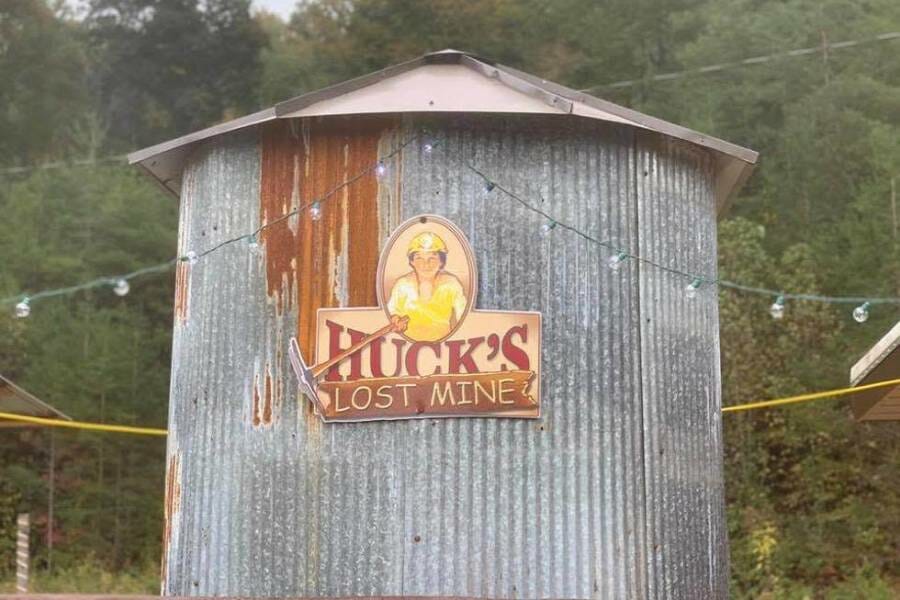
Nestled in the prestigious mountains of Blue Ridge, Georgia, the Huck’s Lost Mine has allowed rockhounds to hunt rare gemstones like amethyst, topaz, emeralds, and many more. Guests can crack open their geodes to explore this highly-sought after amethyst. The store in this mine is loaded with tools required for your amethyst hunting. This adds to the thrilling experience for guests.
The staff in this mine are friendly and knowledgeable, ready to assist guests of all ages in their exploration. As the leading amethyst mine in Blue Ridge, Georgia, and with geodes that contain amethyst for sale in the rock shop, you are guaranteed to have lots and lots of amethyst to take home.
Emerald Hollow Mine
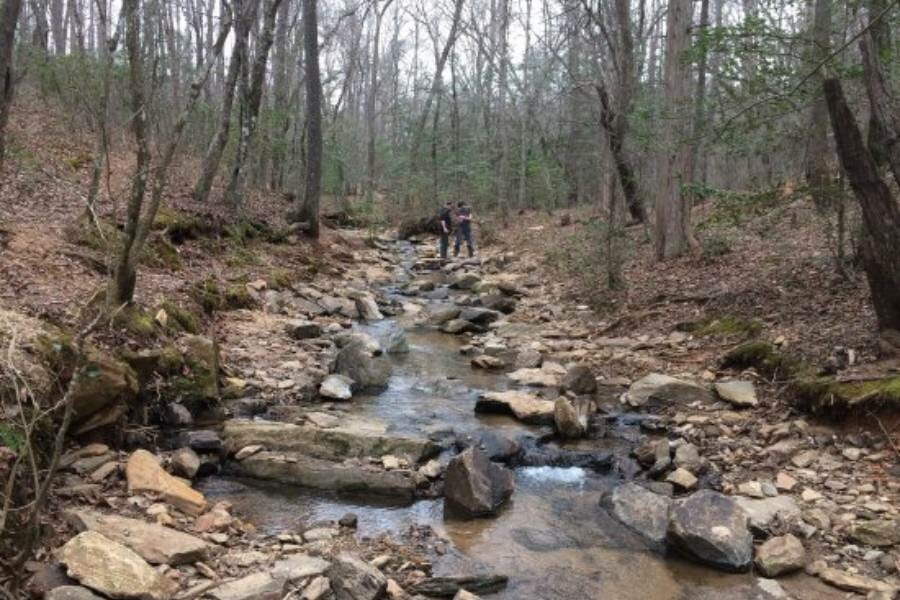
Located in one of North America’s most spectacular geological locations, the Emerald Hollow Mine is open to rockhounds at the foothills of the Brushy Mountains in Hiddenite, North Carolina. The mine is home to over 60 rare gemstones, including amethyst, emerald, sapphire, and more. The structural geological features of this mine reveal different episodes of tectonic plates that colluded and ripped apart simultaneously, giving way to cracks and voids. This allowed mineral-saturated veins and liquid magma to seep into these cracks and voids before cooling down.
This is why Hiddenite found here is very rich in mineral contents. The fragile geological terrain restricts digging in creek beds and around trees by rockhounds in this mine. Also, metal tools are not allowed, and safety instructions in this mine must be strictly followed. There is an abundance of clear quartz and world-class smoky crystals in this mine for rockhounds to hunt.
Whether you are an amateur or a pro, a trip to this unique mine guarantees everyone an exciting and fun-filled experience. Are you looking for a chance to find rare gemstones in the rough? Look no further; Emerald Hollow Mine has got your back.
How To Identify Amethyst You Find
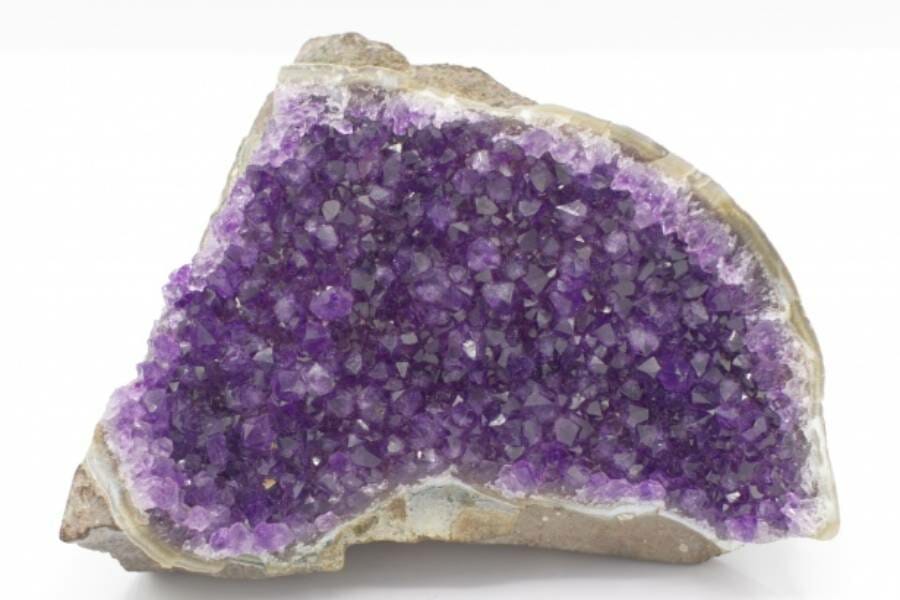
This attractive gemstone comes in different shades of purple, and in case you are curious if what you have found is amethyst, this is why you should be able to identify your finds.
What Does Amethyst Look Like?
For a newbie wondering how to identify amethyst, know the stone is expected to have some imperfections. While it may be difficult to differentiate synthetic amethyst from real, we’ll help you decide what you need to know to identify the amethyst you find.
Color
Color is a major way of knowing what natural amethyst looks like. The color of this gemstone is purple or violet. Some types of amethyst can be slightly reddish, pale as lavender, with shades of blue and white, but they still retain the purple coloration primarily used to identify it.
The amethyst quartz has a milky and translucent shade around the base of the crystal. Holding up to the light shows various shades of glinting and swimming under the surface.
Clarity
Amethyst is a real crystal and eye-clean. The conditions under which amethyst is formed, which include intense pressure and heat, make it free of inclusion. While these conditions cause other stones to bubble under the surface and show discoloration, this is rare with amethyst. A quick way to identify this gemstone is to use a magnifying glass to confirm if bubbles are under the surface. If bubbles are seen, it is not a quartz, meaning it is not an amethyst.
Imperfections
Real gemstones should be inconsistent and imperfect. It is expected to have shades of blue or white and purple. It is not real if the amethyst has a single shade of purple and cracks. Lastly, a real amethyst will most likely have some elements of wear and tear over time. If it is perfect, then it is not real.
Hardness
The hardness of a gem can be used to identify it. Amethyst is 7 on the Mohs hardness scale; this means it is hard, and any object below 7 on the hardness scale cannot scratch amethyst. The knife blade has a hardness of 5, while the human fingernail has 2; if you scratch amethyst with any of these, it should not. If it does, then it is not a real amethyst.
Cut
Amethyst is an easy stone to cut. When amethyst is cut, it has a smooth and polished finish, and you can easily check the color distribution and clarity distribution to confirm the gem’s authenticity. It can also be identified by looking for the uneven distribution of colors when cut into a round shape. This is because real amethysts tend to have a lot of color variation.

